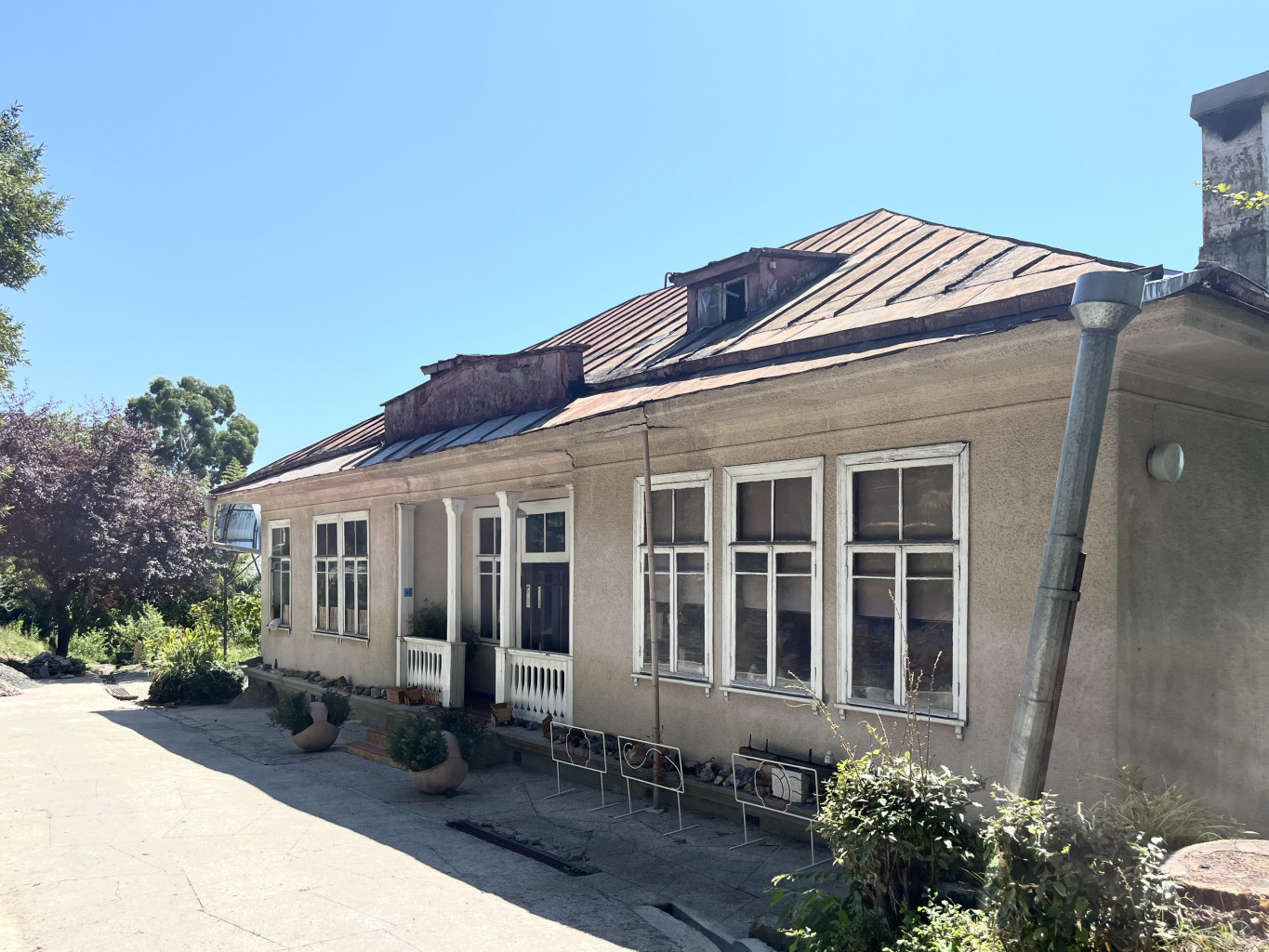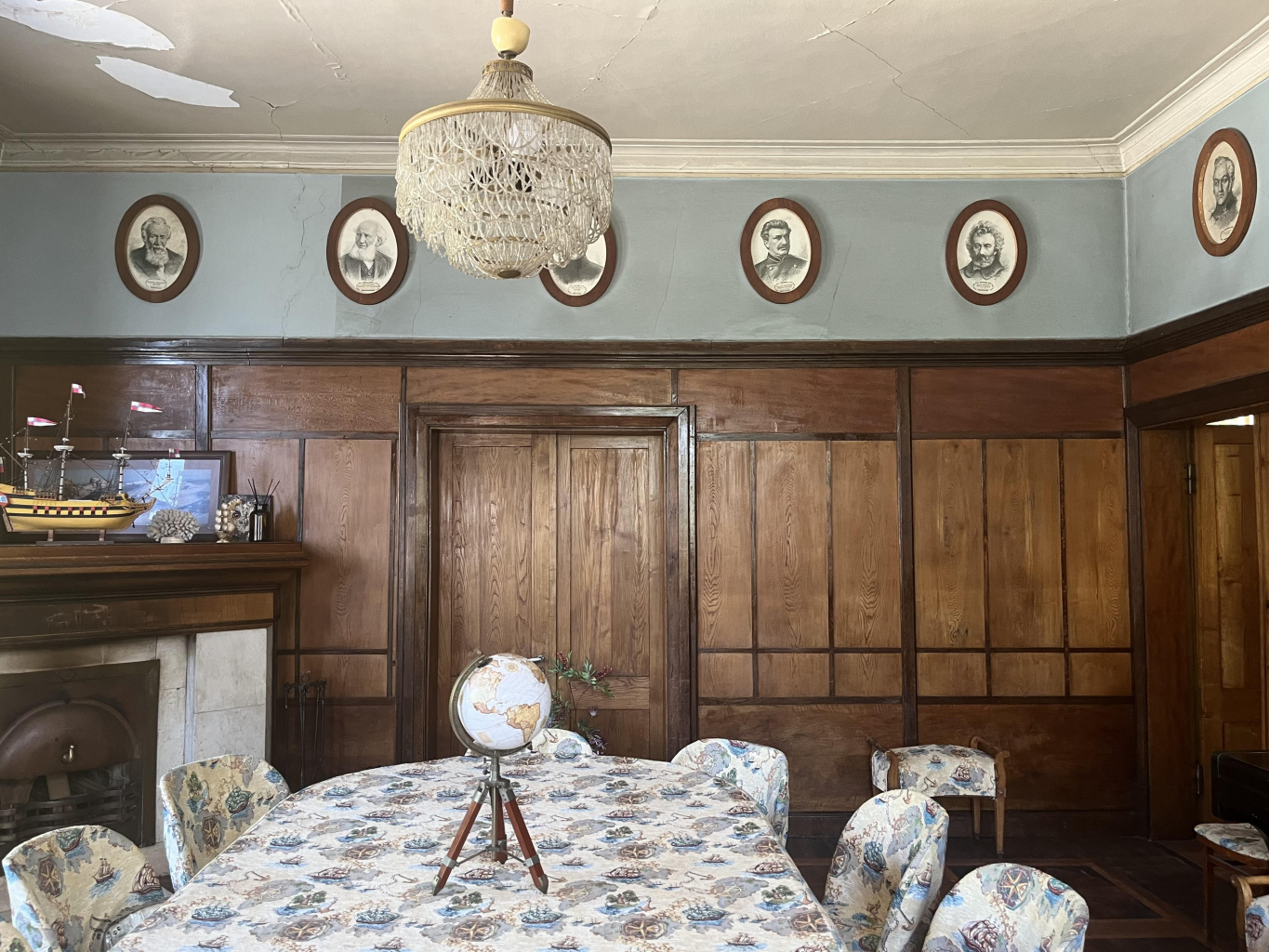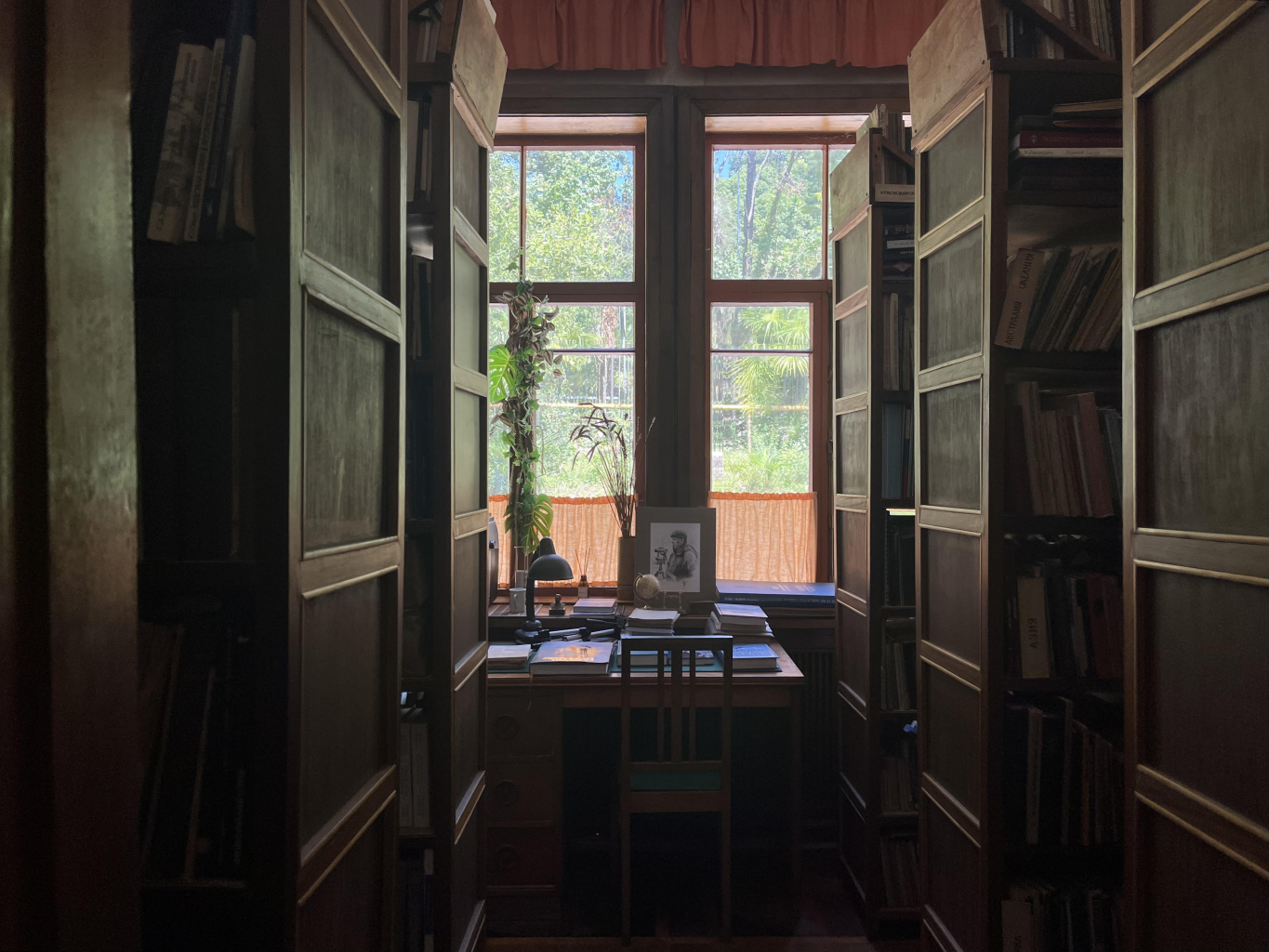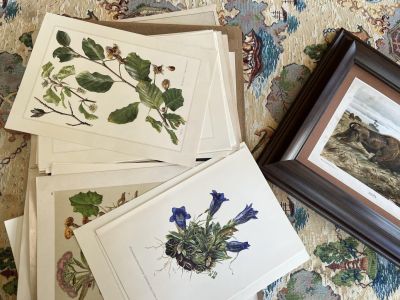
The rapid development of Sochi in recent years has posed a number of challenges to the resort city, including the preservation of historical heritage sites, development of its tourism potential without doing any harm to nature, protection of the Black Sea ecosystems. The Sochi Geographical Society (SGS) has been working on these issues for many years. Famous scientists work at the SGS, as well as ecologists, speleologists - all those who really like the resort city and think about what city the future generation will get. The EcoTourism EXPERT’s correspondent talked with Alexander Zobnin, head of the SGS. He told in his interview about the need to preserve dolmens, about the inhabitants of the Black Sea, about who ate mussels and where to see a mosasaur’s tooth.
- My first question is how was the Sochi Geographical Society created?
- The Sochi Geographical Society has been working since 1955 when local history experts, archivists, historians raised the issue of creating a branch of the All-Russian Geographical Society in the resort city. In September 1957, the Sochi Branch of the All-Russian Geographical Society, USSR Academy of Sciences, was officially established. At the same time, the Academic Council formulated its main tasks and objectives; firstly, the study and preservation of the nature in Sochi and secondly, the popularization of geographic knowledge, especially among the younger generation. By the way, this is the oldest and original task, in the USSR it was called the ‘propaganda of geographic knowledge’. Thirdly, the objectives included the return of valuable protected areas, for example, the Fisht-Oshten mountain range. We can safely say that it was at the SGS that the idea of creating the first national park in the Russian Federation came up. Now, it is the famous Sochi National Park.

- How many participants and departments does the SGS have today?
- Today, there are more than 300 members of the Sochi Geographical Society, including 14 doctors of science in various fields. Three members take part in the work of the expert council of the movement Our Activities in Nature Conservation. I studied ecology at the institute using the books by one of them, Viktor Danilov-Danilyan. As for the departments, the SGS has 10 main ones. The departments of geology, speleology, school and university geography, local history, and tourism are among them. By the way, anyone can become now a member of the Sochi Geographical Society, a person just needs to submit an application with the personal information, go through an interview with the head of the SGS. This is necessary, since the public organization has its own traditions like preserving the nature and history of the resort city, mandatory participation in volunteer activities to clean-up the area. The SGS does not have budget funding, so it is necessary to make an annual contribution of 500 rubles.
- What projects is the Sochi Geographical Society implementing today?
- Over 60 years of work, the SGS members have explored and discovered a large number of cultural and historical heritage sites. For example, one of the latest discoveries was the world’s only monolithic well-shaped dolmen in Volkhonka. During the archeological excavations, many bones and skulls were discovered and used to determine the exact period of the dolmen cult using modern technology. In addition, it was possible to find ancient jewelry with the help of 3D photometry. A member of the Russian Geographical Society, Alexander Gey, recorded that the burial site covered two periods: the bronze and gold ones. This makes the burial site truly unique, that is why, even UNESCO became interested in the Sochi dolmen several years ago. Today, we are working to take control of the preservation of these dolmens. This is necessary because many of them have already been plundered in the Krasnaya Polyana area.
- What difficulties arise when efforts are taken to preserve the dolmen?
- When our team of archaeologists and speleologists returned to the archaeological site, they discovered illegal construction there that could damage the cultural heritage site. We are actively contacting government agencies and law enforcement agencies now to stop the construction in the local area. As a solution to the problem, we propose moving the dolmen to a safe place and building an open-air museum there. The experience of transporting monuments has already been gained in the Crimea, so we are sure that this is possible and even necessary to do.
- The SGS has a large oceanography department. Please tell us what you are studying in the Black Sea.
- Now the SGS scientists are actively studying the archeology of the Black Sea, they are looking for the ancient towns of Hercules. When the sea approached, most of the towns submerged in water. It is believed that there was a place dedicated to God Hercules (also known as Heracles) in Khosta, and during excavations made there, sculptures were actually found at the place where the Greek hero strangles snakes in a cradle. And at the bottom of the Sukhumi Bay, our colleagues from Abkhazia discovered the Greek settlement of Dioscuria. Our partner, geologist Alexey Antipov takes part in the Heraclidae research project and looks for artifacts to confirm the results of the previous studies. He recently dived to a depth of 50 meters to study the seabed and the supposed site of the city of Heraclea using a special underwater drone. During one of his dives, he managed to see an ancient Greek pavement. In addition, he discovered that the ‘cultural shelf’ of the Black Sea has been virtually destroyed by construction in the coastal zone and pollution by construction waste.

- The appearance of sea snails (rapans) in the Black Sea is widely talked about. In your opinion, how dangerous is this?
- In fact, sea snails inhabited the Black Sea back in the 1980s. Later on, they got here with various ships and, due to the lack of main competitors, their population increased and displaced the local Black Sea mussels. The issue of the sea snails is no longer acute. It’s more important now to study the limpet mollusks, which swam to this area from colder water seas. It looks like a small Vietnamese hat and is attached to beach groynes, stones and on the periphery of water. These mollusks are very tasty, so they were completely exterminated by tourists in the Crimea and that is why they were included in the Red Data Book. At the same time, it was always believed that the water temperature in the Black Sea is not suitable for them, it is high for them.
- What other projects related to the Black Sea are under implementation by the SGS?
- The SGS has a marine club Alexandria where we support the traditions of Russian navigation. The plans are now to use the presidential grant to purchase yawls, original sailors’ boats. Unfortunately, this type of vessels is undeservingly neglected, so our plans are to train young people who study at our club to sail a yawl. During the preparation for the Winter Olympics, the abandoned rotunda that used to be a part of the port, was restored on the initiative of the SGS. Now, the city residents like the renovated historic building. At present, it is used for private events like a banquet hall, but we are going to use this building to host an oceanography museum. The SGS will be able to set up an exhibition of ship models made by our society member, ship modeler Nikolai Topchyan, in this future museum. His collection already has over 40 ship models.
- The Sochi Geographical Society has launched a publishing program. What books do you publish?
- Traditionally, the Sochi Geographical Society publishes the literature dedicated to the studies of our city. They cover geology, biology, as well as the biological aspects of flora and fauna and, of course, marine topics. We hold public readings every month and publish the results of a new research based on the results of the readings. Increasingly more books have begun to appear now that are directly dedicated to people. Quite recently, a unique book Adventures in the Mountains by Boris Torchevsky was published where he spoke not only about his geographical discoveries, but also about hiking in the mountains, joint trips to Abkhazia and about his love for Sochi nature.

A botanical collection is among the latest publishing activities of the SGS. What is unique about it? Nowadays, photographs are most often used to illustrate books about plants. However, their true color, shape and details are lost in this case. That is why we want to return drawing the flora and fauna so that painters could accurately convey every nuance of a plant leaf, for example. The botanical collection will feature herbariums, seeds, and he results of archival researches. The SGS decided to publish the first book about orchid plants, there are more than 50 species in our region. We also plan to create a collection with drawings of animals, and we will combine rare art works of animal painters with the knowledge of scientists like Anatoly Kudakhtin, a specialist in bears and wolves, as well as Petr Tilba, an ornithologist, and Boris Tuniyev, a specialist in snakes.

- Recently, the SGS organized an expedition to the Matsesta Cave. What is unique about this expedition?
- The famous Matsesta water spring comes to the surface in this cave, thanks to which balneology has been developing in Sochi for many years. At the same time, the last research in this cave was carried out in 2011, because hazardous hydrogen sulfide gas, dangerous to life, is concentrated there. In the early 2000s, unfortunately, an elderly couple who entered the cave without permission died because of this gas. Since then, no deep research has been conducted, the entrance to the grotto was closed with an iron grate. However, the SGS has the opportunity to study the Matsesta Cave now together with our partners - Russian scientific institutes. As part of the expedition, biologists have established that the unique nature of the Matsesta mineral water spring lies in its biota, due to which the alkalization of minerals occurs. And the combination of its biota and minerals works just a few kilometers deep in the cave, where we went during the expedition. During their two-day work, chemists took water samples to study the unknown biota. Moreover, as a result of our study, Sochi speleologists are going to make a 3D model of the Matsesta Cave to understand the exact size of the internal cavity of the grotto. By the way, Joseph Stalin’s dacha (summer house) was previously located in the building of the Sochi Geographical Society, and the leader of Russia came up with the idea of creating the Matsesta resort center when he had his vacations in this dacha. So, we have a historical connection with this cave.
- The Sochi Geographical Society has created a mineral museum. What exhibits are displayed there?
- The Museum of Mountain Minerals has been operating since the first days of the Sochi Geographical Society. This is the only museum in the South of Russia where it’s possible to see and hold rock samples. All exhibits are unique because they were obtained in distant expeditions made by the SGS geologists. One of the rare exhibits is oil found in 1973 in the Lazarevsky District. At the exhibition one can also see a mosasaur’s tooth, a mammoth’s tooth. Before these finds, it was believed that these animals did not inhabit the Black Sea coast.
Everyone can visit the museum during the SGS working hours: from Tuesday to Friday from 2 p.m. to 6 p.m. And on Wednesday and Friday, an excursion is offered and our geologist tells visitors about all the properties of stones. Afterwards, visitors can go to the library where archival materials are stored that were made during expeditions, as well as a large collection of pre-revolutionary works (published before 1917) by the scientists of the Russian Imperial Geographical Society. They can also visit it and read rare books. A lot of applicants come to us when they prepare for entering geological, forestry institutes, and residents of Sochi come to draw up certificates about the area where they live. The scops-owl Geographer - the ‘custodian’ of the Sochi Geographical Society - welcomes everyone. Once, it was a chick that got in trouble and ‘came’ to our doorstep, members of the SGS saved the bird and took care of the scops-owl.
